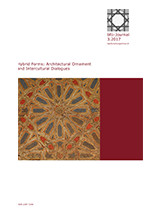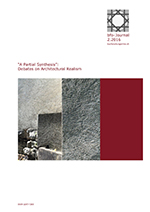Mudejarismo und maurisches Revival in Europa. Transkultureller Austausch zwischen Muslimen, Christen und Juden in der Architektur des Mittelalters und der Neuzeit
Universität Zürich / Kunsthistorisches Institut (2014-2018)
Das am Kunsthistorischen Institut der Universität Zürich (KHIST/UZH) angesiedelte und vom Schweizerischen Nationalfonds (SNF) finanzierte Forschungsprojekt untersucht transkulturelle Austauschprozesse mit Fokus auf die zwischen 711 und 1492 entstandenen Bauten ibero-islamischer Architektur. Diese wirkten bereits vor dem Untergang von al-Andalus prägend auf die Bautätigkeit christlicher und jüdischer Auftraggeber, die in der sog. Mudéjar-Architektur islamische Vorgaben bewusst übernahmen. Eine ähnliche Faszination für die Kunst und Kultur von al-Andalus brachte ab dem 17. Jh. unzählige neo-maurische Repliken hervor. Inwiefern hat sich das Bild von al-Andalus und dessen architektonischen Erbes über die Jahrhunderte verändert? Welches war die künstlerische Motivation, welches die sozio-politischen Gründe für Übernahmen aus einem anderen Kulturkreis? Und wie sahen diese islamischen Repliken schliesslich aus? Mit dem Projekt soll auf die Vielschichtigkeit kultureller Austauschprozesse im mittelalterlichen und neuzeitlichen Europa hingewiesen, die Problematik allzu enger fachlicher Grenzen innerhalb eines im Wandel begriffenen Weltbildes kritisch hinterfragt und eine mögliche Neupositionierung der islamischen Kunstgeschichte diskutiert werden. Für mehr Informationen siehe www.transculturalstudies.ch
Projektleitung: Prof. Dr. Francine Giese (SNF-Förderungsprofessur KHIST/UZH)
Projektmitarbeiter: Dr. Ariane Varela Braga, lic. phil. Helena Lahoz Kopiske, lic. phil. Nadja Koch (KHIST/UZH)
Assoziierte Mitarbeiter: Dr. Sarah Keller (Vitrocentre Romont), Katrin Kaufmann, M.A.
Mudejarismo and Moorish Revival in Europe. Transcultural exchanges between Muslims, Christians and Jews in the Architecture of the Middle Age and Modern Times
University of Zurich / Institute of Art History (2014-2018)
Located at the Institute of Art History of the University of Zurich (KHIST/UZH) and funded by the Swiss National Science Foundation (SNSF) the research project investigates the cultural exchange processes with focus on built edifices of Hispano-Islamic architecture between 711 and 1492. These constructions influenced the building activity of Christian and Jewish patrons who deliberately took over Islamic models in the so-called Mudéjar-Architecture long before the decline of al-Andalus. From the 17th century, a similar fascination for the art and the culture of al-Andalus created innumerable neo-Moorish replicas. How far and to what extent did the vision of al-Andalus and its architectonic heritage change over the centuries? What were the artistic motivations and the socio-political reasons for adoptions of an architectural language from other cultural areas? And how did these Islamic replicas look? The aim of this project is to emphasize the complexity of cultural exchanges in medieval and modern Europe, to scrutinize the problematic of scientific fields within a changing world view that are often too narrow, and to discuss a possible repositioning of Islamic Art History. For more information see www.transculturalstudies.ch
Project team leader: Prof. Dr. Francine Giese (SNSF-Professorship KHIST/UZH)
Team members: Dr. Ariane Varela Braga, lic. phil. Helena Lahoz Kopiske, lic. phil. Nadja Koch (KHIST/UZH)
Associated team members: Dr. Sarah Keller (Vitrocentre Romont), Katrin Kaufmann, M.A.






